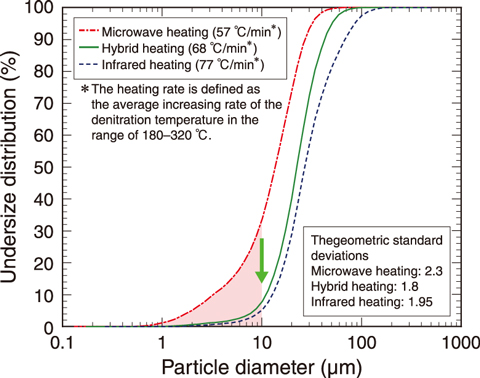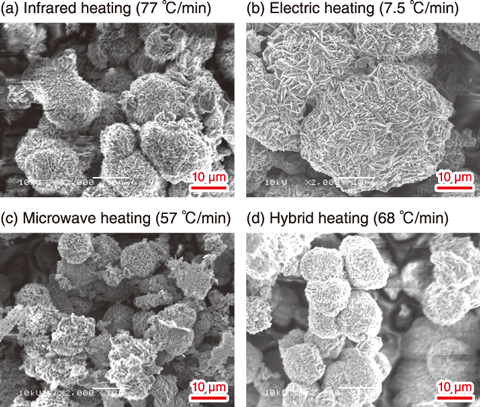
Fig.7-12 Schematics of the apparatus used for various heating methods

Fig.7-13 Undersize distribution of CuO powders synthesized using various heating methods

Fig.7-14 Scanning electron micrograph of CuO powders synthesized by each heating method
During reprocessing, a mixture of plutonium nitrate and uranyl nitrate is recovered from spent fuel and converted into a mixed oxide (MOX) raw powder using a microwave heating denitration method. The raw MOX powder obtained in this method has good sinterability and can produce high-quality pellets. However, raw MOX powders contain many fine particles, making fuel fabrication difficult; therefore, particle control technology is required to improve the powder flowability, depending on particle size and shape for the powder handling such as die filling and transfer in the fuel fabrication. To investigate the effects of heating method and rate on the resulting copper oxide (CuO) powder characteristics, a copper nitrate aqueous solution was used to simulate the mixed solution of plutonium nitrate and uranyl nitrate, and was heated (Fig.7-12) using infrared heating, an electric heater, microwave heating, and hybrid heating (i.e., a combination of microwave heating and using an electric heater) under varied output power.
The resulting undersize distribution (i.e., particle size distribution) of the synthesized CuO powders is shown in Fig.7-13; at the same heating rate, the powder obtained by microwave heating was finer, with a ratio of particles less than 10 μm in diameter of over 30%. The hybrid heating method provided a power with a fine powder ratio of under 10%. Furthermore, the undersize distribution became sharp because the geometric standard deviation of the undersize distribution was the smallest. Therefore, a hybrid heating method can improve the powder handling such as die filling and transfer in the fuel fabrication.
Comparing the CuO powders obtained from each heating method (Fig.7-14) showed that the particles synthesized by the hybrid heating (Fig.7-14(d)) had better particle conditions than those obtained by the other studied methods (Figs.7-14(a)-(c)). The hybrid heating method employed enabled uniform nucleation and growth of the particles, as the entire sample can be uniformly heated by a combination of internal heating (via a microwave) and external heating (via an electric heater). Thus, the hybrid heating method is an effective method for improving powder characteristics.
Future work will aim to further investigate the effectiveness of the proposed hybrid heating method, both via experiments using a nuclear fuel material and via numerically analyzing the temperature field.
<Previous: 7-4 | Next: 8 Research and Development on Fuel Reprocessing, Decommissioning, and Radioactive Waste Management>